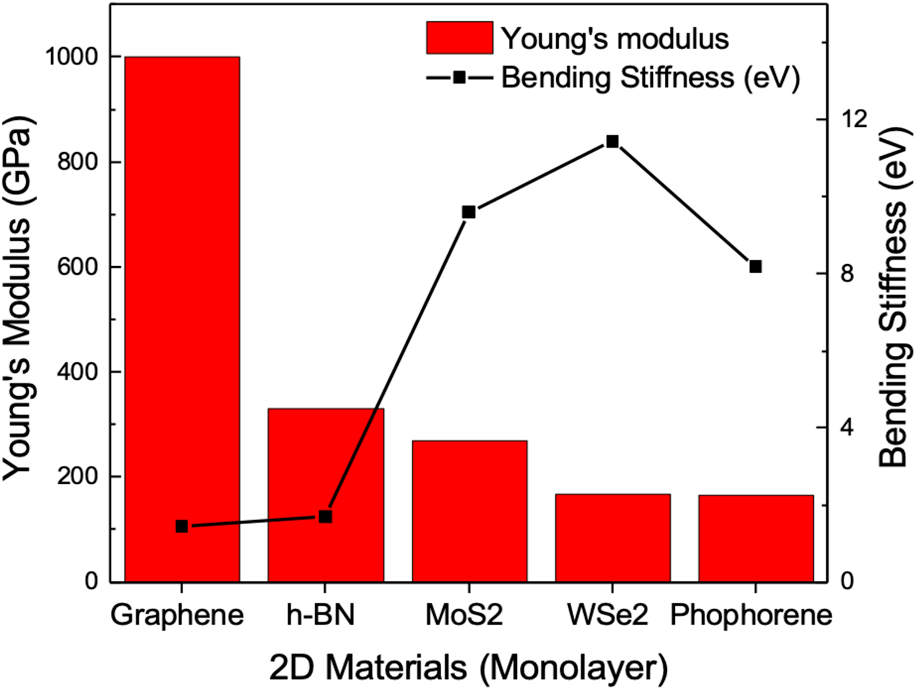Crossref Citations
This article has been cited by the following publications. This list is generated based on data provided by
Crossref.
Kher, Rahul K.
and
Patel, Dipak M.
2021.
A Comprehensive Review on Wearable Health Monitoring Systems.
The Open Biomedical Engineering Journal,
Vol. 15,
Issue. 1,
p.
213.
Wu, Yaopeng
Yuan, Wei
Xu, Ming
Bai, Shigen
Chen, Yu
Tang, Zhenghua
Wang, Chun
Yang, Yang
Zhang, Xiaoqing
Yuan, Yuhang
Chen, Mingyue
Zhang, Xing
Liu, Bin
and
Jiang, Lelun
2021.
Two-dimensional black phosphorus: Properties, fabrication and application for flexible supercapacitors.
Chemical Engineering Journal,
Vol. 412,
Issue. ,
p.
128744.
Georgoulea, Nina C
Power, Stephen R
and
Caffrey, Nuala M
2022.
Strain-induced stacking transition in bilayer graphene.
Journal of Physics: Condensed Matter,
Vol. 34,
Issue. 47,
p.
475302.
Mario Galicia-Hernandez, Jose
Guerrero-Sanchez, J.
Ponce-Perez, R.
Fernandez-Escamilla, H.N.
Cocoletzi, Gregorio H.
and
Takeuchi, Noboru
2022.
Self-energy corrected band-gap tuning induced by strain in the hexagonal boron phosphide monolayer.
Computational Materials Science,
Vol. 203,
Issue. ,
p.
111144.
Liu, Jin
and
Kumar, Vijay
2022.
Application of Computer 3D Modeling Technology in Graphic Image Design.
Computational Intelligence and Neuroscience,
Vol. 2022,
Issue. ,
p.
1.
Avilés, María Olivia
Jelken, Joachim
and
Lagugné-Labarthet, François
2022.
Periodic Spiral Ripples on VS2 Flakes: A Tip-Enhanced Raman Investigation.
The Journal of Physical Chemistry Letters,
Vol. 13,
Issue. 41,
p.
9771.
Farhangdoust, Saman
Georgeson, Gary
and
Ihn, Jeong-Beom
2022.
MetaMembranes for the Sensitivity Enhancement of Wearable Piezoelectric MetaSensors.
Sensors,
Vol. 22,
Issue. 5,
p.
1909.
Tuff, Walker J.
Hughes, Robert A.
Nieukirk, Brendan D.
Ciambriello, Luca
Neal, Robert D.
Golze, Spencer D.
Gavioli, Luca
and
Neretina, Svetlana
2023.
Periodic arrays of structurally complex oxide nanoshells and their use as substrate-confined nanoreactors.
Nanoscale,
Vol. 15,
Issue. 43,
p.
17609.
Kim, Jin Myung
Haque, Md Farhadul
Hsieh, Ezekiel Y.
Nahid, Shahriar Muhammad
Zarin, Ishrat
Jeong, Kwang‐Yong
So, Jae‐Pil
Park, Hong‐Gyu
and
Nam, SungWoo
2023.
Strain Engineering of Low‐Dimensional Materials for Emerging Quantum Phenomena and Functionalities.
Advanced Materials,
Vol. 35,
Issue. 27,
Hao, Shijie
Hao, Yulong
Li, Jin
Wang, Kaiyi
Fan, Chen
Zhang, Shiwei
Wei, Yuehua
and
Hao, Guolin
2024.
Controllable growth of two-dimensional wrinkled WSe2 nanostructures via chemical vapor deposition based on thermal mismatch strategy.
Applied Physics Letters,
Vol. 125,
Issue. 7,
Meenakshi, Ganesh Abinaya
Sakthinathan, Subramanian
and
Chiu, Te-Wei
2024.
Supercapacitors.
p.
193.
Galiy, P. V.
Nenchuk, T. M.
Ciszewski, A.
Mazur, P.
Dzyuba, V. I.
and
Makar, T. R.
2024.
Studies of indium nanostructures growth models on A
3
B
6
layered templates
.
Molecular Crystals and Liquid Crystals,
Vol. 768,
Issue. 15,
p.
799.
Ali, Mubashar
Bibi, Zunaira
Younis, M. W.
Huang, Houbing
Raheel, Muhammad
Afzal, Usama
Alshgari, Razan A.
and
Mohammad, Saikh
2024.
Structural, Optoelectronic and Thermodynamical Properties of 1T Phase of Transition Metal Oxides TMO2 (TM = Zr and Hf): A first-principles Study.
Journal of Inorganic and Organometallic Polymers and Materials,
Roy, Ankita
Dhal, Abhijeet
Mock, Clara
McWilliams, B.A.
Cho, K.C.
and
Mishra, Rajiv S.
2024.
Deciphering mechanical heterogeneity of additively manufactured martensitic steel using high throughput nanoindentation combined with machine learning.
Additive Manufacturing,
Vol. 93,
Issue. ,
p.
104408.
